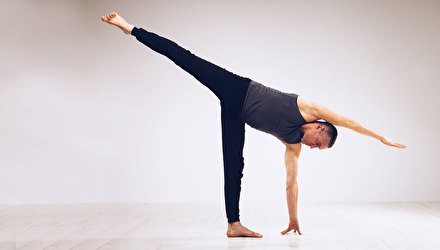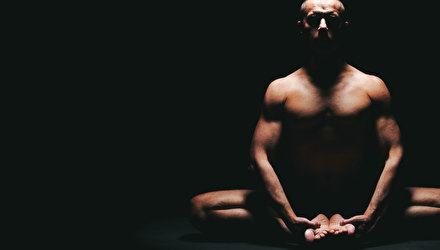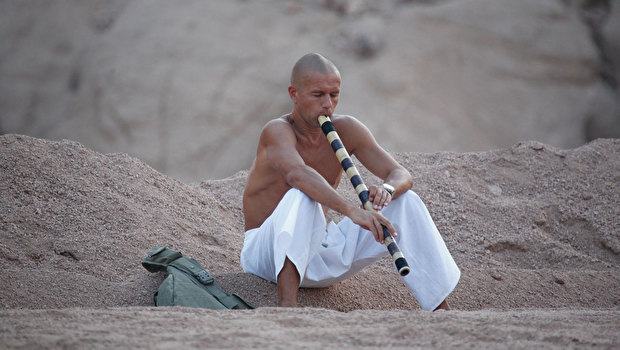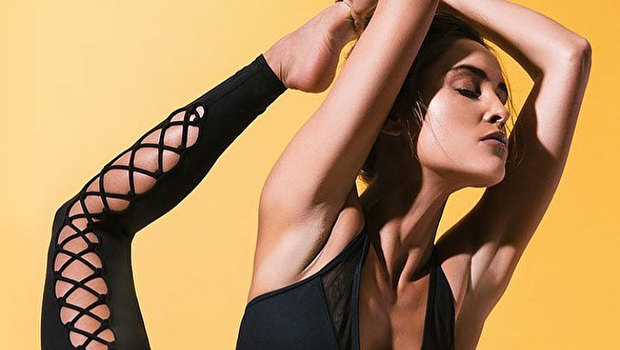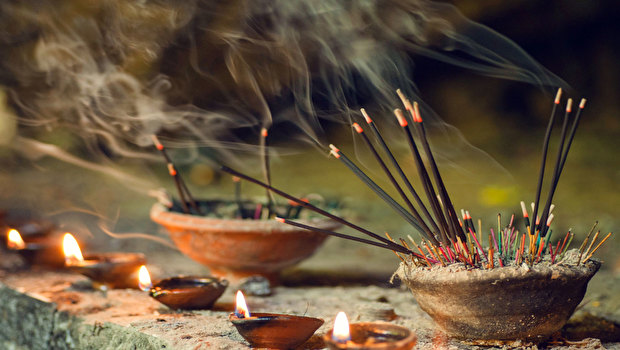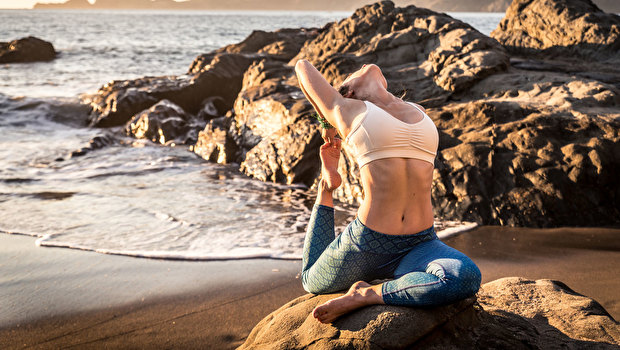An extended folding with a wide angle spread of the legs to the sides lying on your back - this is how this exercise can be briefly described. Translated into Sanskrit - supta-upa-vistha-kona-asana.
In its action, this exercise is similar to ordinary upa-vistha-kona-asana, performed in a sitting position, where the torso leans forward and lies on the floor in the middle between straight legs spread apart at an angle of about one hundred to one hundred and ten degrees. Too wide spreading of the legs to a position approaching the so-called “transverse split”, or sama-kona-asana, significantly reduces the effectiveness of the psychoenergetic and therapeutic effect of upa-vistha-kona-asana. In all exercises of the upa-vistha-kona-asana type, perfectly straightened legs diverge to the sides at an angle at which the feet can be firmly fixed with arms extended to the sides. The torso is located in the plane between the legs, the spine is extended.
Unlike upa-vistha-kona-asana proper, supta-upa-vistha-kona-asana has a more pronounced therapeutic effect. In addition, when performing upa-vistha-kona-asana, the rear surfaces of the legs are subjected to intense “lever” stretching due to the effect of the force of the weight of the torso, aimed at turning the pelvis in the hip joints. When performing supta-upa-vistha-kona-asana, the stretching of the back surfaces of the legs is carried out only due to the strength of the muscles of the front surfaces of the thighs and the force of pressing the hands on the heels. In this version, it is very difficult to overstretch and seriously injure the tendon-muscle complexes of the back surfaces of the legs, moreover, it is almost impossible.
In addition, the back and abdominal muscles are actively involved in supta-upa-vistha-kona-asana, which has an extremely beneficial effect on the entire spine, especially in the sacro-lumbar and thoracic regions. In addition, the work of the hands in supta-upa-vistha-kona-asana is such that when performing this exercise, not only the muscles of the muscular corset of the spine are activated, but also all the muscles of the back surface of the body, which helps to get rid of excess fat deposits and form an exceptionally harmonious, slim and athletic body.
Intensive static study of the abdominal muscles in supta-upa-vistha-kona-asana leads to an optimization of the state of the energy center of the body, which is located inside the abdominal cavity just below the navel. And the whole state of both the organic and field components of the human body depends on how balanced and harmonious this center works.
Dhirendra Brahmachari, in his book Yogasana Vijnana, writes about the general effect of the exercise vishtrita-pada-vaksha-bhumi-sparsha-asana, one of the typical variations of upa-vistha-kona-asana, in his book Yogasana Vijnana:
“The practice of this asana promotes growth. Hemorrhoidal nodes and other similar diseases disappear, and even the very possibility of their occurrence decreases. This asana is very beneficial for dancers. It stimulates blood circulation in the area below the navel, which gives the body flexibility, mobility and strength. Asana is very useful in diseases of the respiratory organs ... "
Iyengar, in his Yoga Deepika, also adds a few more important touches to the description of the action of upa-vistha-kona-asana.
“This asana stretches the hamstrings, creates proper blood circulation in the pelvic organs, healing this area. The posture prevents the development of a hernia, and in mild cases cures it. It also relieves sciatica pain. Very useful for women as it controls and regulates the flow of menstrual blood and also stimulates ovarian function.
Supta-upa-vistha-kona-asana is especially good because all the positive effects inherent in upa-vistha-kona-asana are significantly enhanced in it, and a powerful beneficial effect on the spine is added to them, and the likelihood of injury is much less.
The exercise is performed as follows:
Lying on your back, bend your legs and pull them towards you. Grasp the heels behind with your hands, so that the palms tightly clasp the heel bones. Then you need to raise your head and upper back. Now we put our feet on the floor with our fingers on the sides of the head, moving them to the sides at arm's length. Feet stand vertically with heels up. With the middle of the palms, we press on the heels, firmly fixing the feet on the floor. The direction of pressing is strictly vertically down. In no case do we “fill up” the feet anywhere - neither to the sides, nor forward, nor back. Everything - the starting position is accepted.
And now, with the movement “from the geometric center of the body” - the area just below the navel - we try to fully straighten the legs and at the same time lower the sacrum to the floor as low as possible. The head and shoulder girdle, on the contrary, in this movement rise up as high as possible. We sort of pull the sternum and forehead in the direction of the navel and even more strongly push off from the feet with our hands vertically upwards. The feet are even more tightly pressed to the floor with the toes. The back, as it were, “spreads” on the floor, the spine and back surfaces of the legs are stretched, the muscles of the back and torso are actively involved in the work of holding the asana in static fixation.
Hold the final position with legs fully extended for as long as necessary. Then we relax our back, put our head on the floor, bend our legs and also put them on the floor, stretched out in a supine position. Relax.
Important for this exercise:
- raise the head and shoulder girdle as high as possible;
- firmly fix the feet with your fingers on the floor in a strictly vertical position;
- fully straighten your legs and arms;
- put your palms on your feet so that the heels rest exactly in their middle;
- press your hands on your feet strictly vertically down (it is not at all necessary to clasp your heels, you can straighten your fingers and simply press your heels with flat palms);
- lower the sacrum as low as possible, “rolling” the spine on the floor;
- do not wrinkle your forehead and do not groan hoarsely ...
- perform all movements “from the center”, and build the entire “construction” of the asana relative to the geometric center of the body.
- However, points 7 and 8 are relevant for all asanas without exception.



